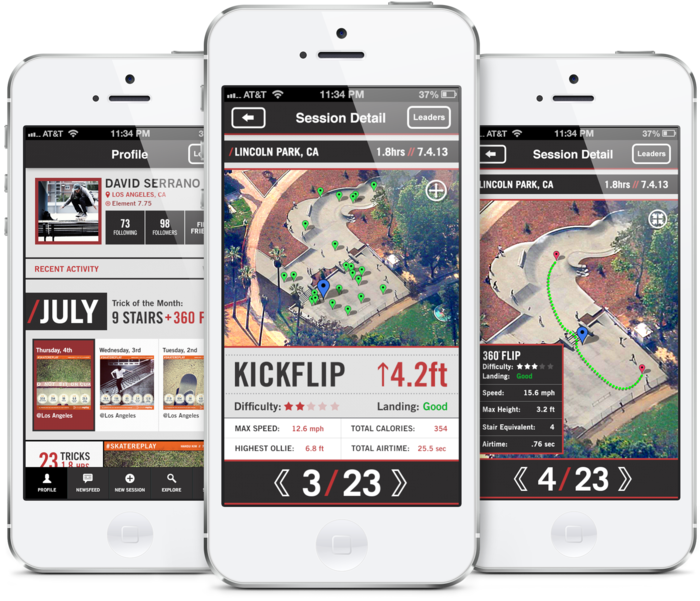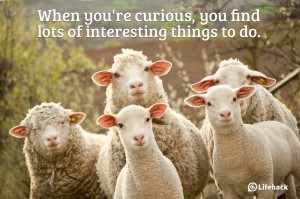What is Nostalgia good for?
“I always knew looking back on the tears would make me laugh, but I never knew looking back on the laughs would make me cry.” Cat Stevens
With lifelogging becoming popular in this past year thanks to the introduction of new wearable technology, we are then left to wonder if there is a need to capture our lives in such detail. What do we get out of all these photos and data that we have? While nolstagia can be bittersweet, it has been proven in recent studies to counteract loneliness, boredom and anxiety. Through sharing nostalgic moments, it makes us happier and our lives more meaningful. Ever felt all warm and fuzzy inside just looking through your pictures? That’s the idea. With lifelogging devices becoming increasingly accessible to everyone, looking back will never be easier. What are some of your favourite moments? Drop us a comment here!
Read more: What is Nostalgia Good For? Quite a Bit, Research Shows
A personal assistant for you?
In a world that is moving faster than ever, keeping track of every single detail in your life is increasingly harder. This is why Google has come up with this new application called “Google Now” to counter this problem. Known as predictive search, Google Now basically act as your personal assistant, anticipating what you need before you ask for it. Imagine looking at your phone and a notification pops up informing you to leave home earlier for your meeting due to bad traffic. The strange thing is that you never even keyed this information into your calendar. How does your phone know? Basically, Google Now has integrated your calendar and email data with the traffic conditions intelligently to figure that you need an extra half hour to drive to work. We think this is great development. However, this might also mean increased intrusion into our lives. What do you think? How then do you keep a fine balance?
Read more: Apps that know what you want, before you do
Biobeats: Making music with your pulse
On the same note of intelligent applications, we think this new application by Biobeats is really cool. The idea behind Biobeats is that people need encouragement to stay engaged with their wellness regimes. So, they developed “PULSE”, an application that feels the pulse of your heart and turns it into music for you. So if you’re running and it detects you need a rest, it can slow down the song. Pretty nifty? We think so too! This concept is termed “Adaptive Media” and we think it might be the future to music and entertainment. Imagine listening to music and watching films that changes and progress according to how we feel. Now, THAT is something. With more wearable technology increasingly producing quantified-self health data, BioBeats will also be device-agnostic, pulling in quantified-self health data from any phone, FitBit, FuelBand, UP, or other sensor willing to work with it. Watch this great video on how PULSE work!
Read more: BioBeats raises celebrity seed funding to turn quantified self data into therapeutic music
Trace: Quantified-Self tech for action sports
If you are a runner or a cyclist , there are all these great tools out there like Fitbit etc to track your mile splits and heart rate etc. However, nothing really exist for action sports. Surfers will talk about the best waves that they caught and skaters talking about their sessions in the park, but there is no way to quantify that data. That is why ActiveReplay has come up with this new device called “Trace” to make your action sports measurable, shareable and comparable. To use it, simply attach it on your equipment and go. It will then capture data such as speed, distance, jump height and rotation etc. This application not only collect your data and give you a history you can check at any time for self improvement, but also allows you to share that info with other athletes in your field. We think this product is a great tool for self-improvement. What do you think?
Read more: ActiveReplay’s Trace Wants To Bring Quantified Self Tech To Action Sports For Players And Spectators
Riding safe with wearable tech
On another note, wearable technology takes a new form in the latest episode of The Ben Heck Show, the first collaborative engineering community for design engineers and technology enthusiasts. His newest take is on the bicycle turn indicator. Using a battery-powered backpack with mounted LED lights that blink for 20 seconds in the form of arrows, wearers can then deploy left or right signals by either turning their heads in the respective directions or by switching the switches on with their chin. Although this is just a project, we think it can be converted into a real product to aid safer riding among cyclists. Will you use it?
Read more: Bicycle turn signals get the Ben Heck mod treatment
If you enjoyed this post, please follow us on twitter and facebook! PS – Have you pre-ordered your Memoto Lifelogging Camera yet?





